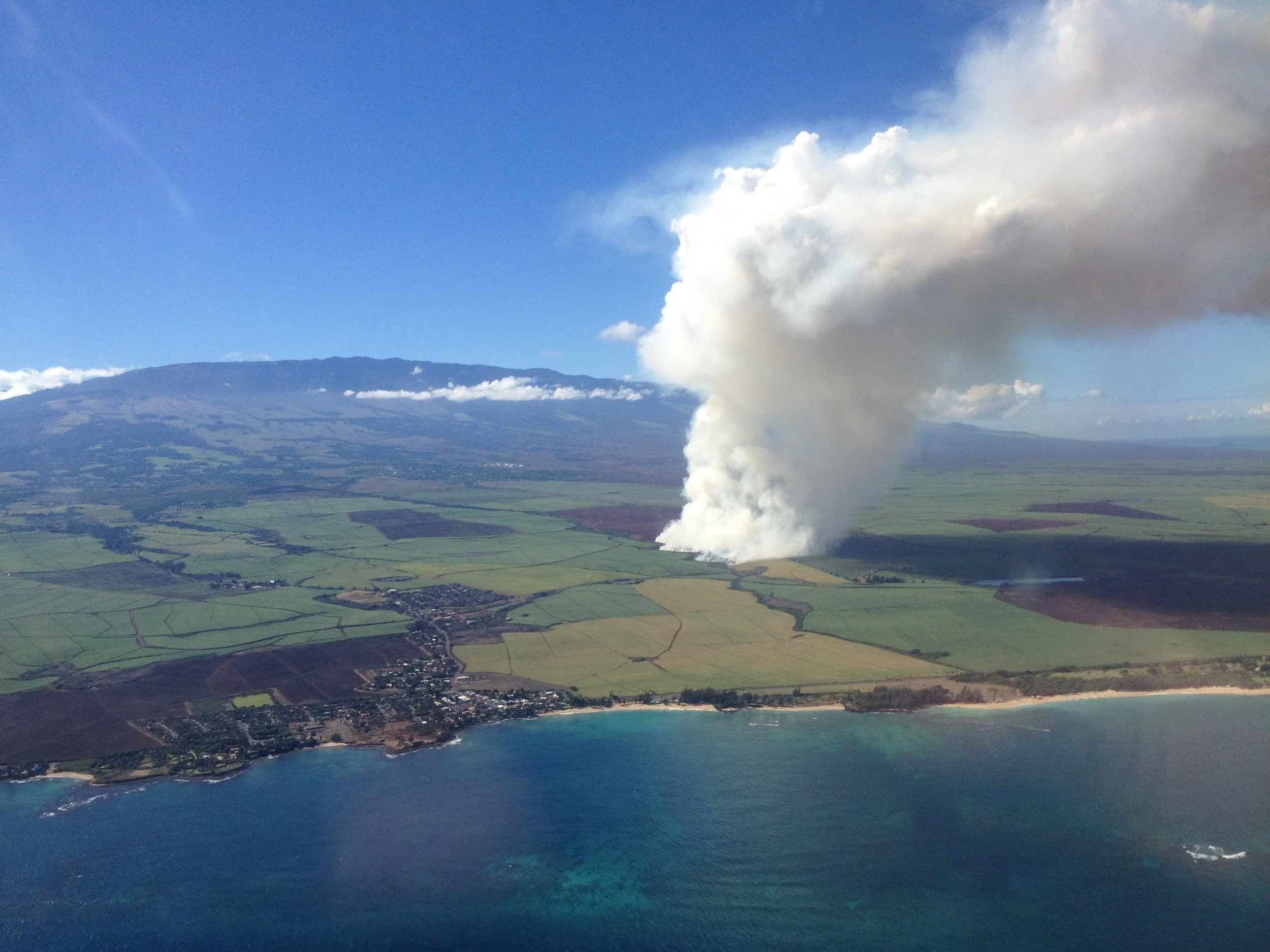Waikapū - Upper Lo'i Kalo (BMP - 1890)
“Kaulana ‘o Nā Wai ‘Ehā” “Famous are the Four Great Waters of Waikapū, Wailuku, Waiehu, and Waiheʻe.”
This well-known saying attests to the traditional, historical, and cultural significance of the four ahupuaʻa within the moku of Wailuku and their fresh water resources. Nā Wai ‘Ehā, was once the largest contiguously cultivated loʻi kalo growing region in all of Hawaiʻi. It also served as the primary ritual, political, and population center of Maui. The vast water resources of Mauna Kahālāwai (West Maui Mountains) supplied these four streams with the life giving waters of Kāne. This allowed the Hawaiian population of this area to develop expansive irrigation and agricultural systems unique to Hawaiʻi. The rich history of Nā Wai ‘Ehā, is directly linked to the abundance of wai. Hawaiians thrived for many generations in this region by cultivating loʻi kalo (wetland kalo), fishing in natural and manmade inland fishponds, gathering native stream life such as ʻoʻopu, hīhīwai, and ‘ōpae, and collecting drinking water from springs.
Largest contiguous wetland (loʻi) kalo growing region in Hawaiʻi. 4,000+ loʻi kalo were documented as being under cultivation on an estimate of 3,000+ acres in 1848.
Primary ritual, political, royal, and population center of Maui
Largest concentration of documented heiau on Maui
Final resting place of Maui’s highest ranking aliʻi located in ‘Īao Valley, (some interred in underwater caves within the Wailuku river)
Noted battles: Ahulau ka Piʻipiʻi i Kakanilua, Kepaniwai, Kaʻuwaʻupali
Numerous composed mele (Kaulana Nā Wai ʻEhā, ʻĪniki Mālie, I Waikapū ke Aloha) and legendary moʻolelo (i.e. Puapualenalena, Haumea, Māui, Kihawahine, Battle of the Pueo)
Extensive ʻauwai (irrigation) systems. (i.e. Kama ‘Auwai and Kalani ʻAuwai)
Vast aquatic and marine resources (ʻoʻopu, hīhīwai, ʻopae)
Diverse watershed comprising of native dryland, mesic, and wet forest plants, birds, insects, snails, mammal species and one of the wettest places on earth – Puʻukukui.
Largest stream in Mauna Kahālāwai (West Maui Mountains), Waiheʻe Stream (24 mgd)
Expansive puʻu one (sand dune) system and lua kupapaʻu (burial) system stretching 8 miles from Waiheʻe to Waikapū.
Unique loko wai (wetlands) & muliwai (estuaries) (i.e. Kapoho, Kaehu, Kanahā-Mauʻoni, Keālia)
Extensive kula / plains (Kula o Kamaʻomaʻo / Waikapū & Wailuku Commons)
Largest ground water aquifer on Maui (supplies over 70% of Maui’s water needs)
Mauka to makai (mountain to the ocean) stream connectivity for all 4 streams (Waikapū: 4 mgd / Wailuku: 13 mgd / Waiehu: 4 mgd / Waiheʻe: 24 mgd)


































